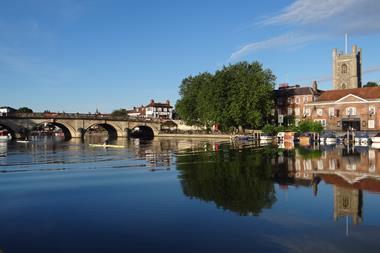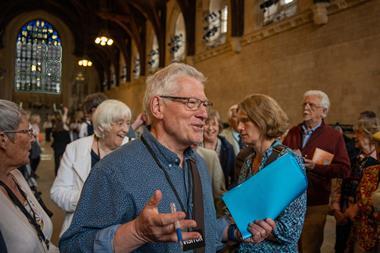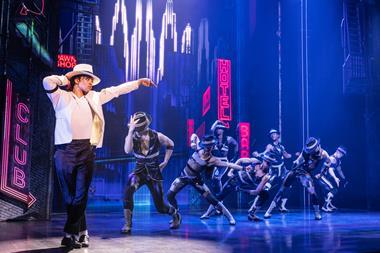GTO Mike Battman and his group were among the first people to experience a ride behind the locomotive when it made its first public outing in ten years. Here’s what he thought.
 M.jpg)
Pictured: Flying Scotsman. Credit Paul Kingston North News.
GTO Mike Battman and his group were among the first people to experience a ride behind the locomotive when it made its first public outing in ten years. Here’s what he thought.
A recent poll of people across four continents asked them to name five trains or engines they had heard of.
The results included the Japanese Bullet Train and the fastest-ever steam locomotive, Mallard. The list also included Harry Potter’s Hogwarts Express at number 25 and Thomas the Tank Engine was at number 11.
However, it was Flying Scotsman that pipped them all and topped the poll ahead of the Rajadhani Express – the pride of the Indian railway network – the Orient Express and the Ghan, Australia’s 1,800 mile pan-continental service.
A bit of background
It was in 1922, when Sir Nigel Gresley was the chief mechanical engineer for the London & North Eastern Railway (LNER), that he started construction of the A3 pacific class of locomotives at Doncaster Works.
In 1923 locomotive No. 1472 left the production line. The class was employed on long-distance express trains on what is now known as the East Coast Main Line from Kings Cross to Leeds, York, Newcastle and Edinburgh.
The locomotive was named after the 10am London to Edinburgh ‘The Flying Scotsman’ train service.
Flying Scotsman was always something of an ambassador for the LNER but its fame came on 30th November 1934 when it became the first steam locomotive to be officially authenticated as reaching 100 miles per hour.
After World War Two, though, its use on the fastest trains receded as more modern engines were introduced.
Flying Scotsman’s number has changed on numerous occasions. Firstly in February 1924 when renumbered from 1472 to 4472 at the same time receiving its name prior to representing the LNER at the British Empire Exhibition in both 1924 and 1925. Then during the war years it was painted in matt black and became 502 followed by 103 when the war finished. Under British Railways it received its final number 60103.
As diesels replaced steam the locomotive was withdrawn from service in January 1963 and British Railways stated that there were no plans to preserve it, as it was in a poor state of repair.
 (2) M.jpg)
Pictured: Flying Scotsman. Credit Paul Kingston North News.
However, rail enthusiast Alan Pegler decided to purchase the loco before it could be scrapped and the engine was renovated at its birthplace in Doncaster.
Tours of the USA, Canada and Australia raised its profile but the costs kept rising and Pegler was declared bankrupt in 1972.
William McAlpine and later Tony Marchington tried running it privately but it was a constant drain on finances. With the locomotive again up for sale, a high-profile national campaign started and it was finally bought in April 2004 by the National Railway Museum.
The NRM were well aware that the locomotive was in need of a major overhaul and repairs started in 2006.
True to form the overhaul discovered more problems than expected meaning costs and time delays increased leading to much debate of its value and there were serious discussions of it being cosmetically restored and displayed as a static exhibition.
However, despite the criticism the NRM stoically proceeded with the repairs and the loco finally emerged in war time grey livery in January 2016 when it spent two weekends on the East Lancashire Railway running-in.
Despite, at times, appalling weather, the locomotive delighted rail fans, families and the public alike, carrying over 8000 passengers and being watched from the line-side and stations by many more.
My group and I were among the first passengers to travel behind the locomotive on its first public outings.
My group trip riding behind Flying Scotsman
It was a miserable drizzly morning when our party of 12 turned up to travel behind Flying Scotsman, but the platforms at Bury Bolton Street were heaving and full of anticipation.
The train was 30 minutes late but no one was complaining or asking for compensation, when the loco arrived in the platform there was many with a tear in their eye.
Seated in our reserved seats in coach B of the full eight coach train we set off to Rawtenstall; the first thing you realised is that 50 per cent of the people on the platform were spectators, all along the line there were people watching the spectacle.
We felt like royalty as we somewhat mockingly began giving the regal wave back to those waving at us. At the level crossings at Ramsbottom you couldn’t see the road for crowds of people wanting a glimpse.
Videos and photographs were being taken by all, on phones, with the latest Canon and Nikon DSLR cameras and even by drones flying above the train.
We never reached speeds anywhere near the 100mph this engine had once graced the main lines with, but the smell of the smoke, the condensation of the windows, and the noise of the steam locomotives all added to the atmosphere.
A couple of reversals (with photo opportunities galore) and 90-minutes later we were back at Bury where we retired to the real ale bar on the platform for well-earned refreshments.
Heritage railways have realised that the bygone era is best recreated in conjunction with good beer and wholesome food and both were in abundance on our experience of the East Lancashire Railway.
The overhaul cost in excess of £4.2 million and took the best part of ten years, is it worth it? Well, when we consider that in 1992 the Windsor Castle fire cost £36.5 million to restore; the Cutty Sark cost a similar figure in 2007 and the National Trust are to spend £65 million on the refurbishment of Clarendon Park. It is then you realise that Flying Scotsman’s costs pale into insignificance for the restoration of a beautiful, living and steaming part of our history.
Where can I see or even ride behind Flying Scotsman?
After the running-in trials the engine is due an inaugural main-line run on its old stamping ground from Kings Cross to York at the end of February. Dates and booking details have yet to be announced by the National Railway Museum.
It will then be the star of numerous events at the National Railway Museum, together with many more main-line tours as it travels around the country.
On March 2rd the NRM is hosting an arrival dinner for the locomotive. Then from late February until 6th March a Welcome Home event will take place.
In April groups can visit the museum in its series of late night opening events.
Between 25th March and 8th May, meanwhile, visitors will be able to step on to three carriages of the kind that travelled the flagship London – Edinburgh route. Each carriage will offer a different sensory experience to bring the Flying Scotsman story of speed, innovation, fame and luxury to life, from 1920s cinema cars to 1930s cocktail bars.
For more information visit www.flyingscotsman.org.uk.












